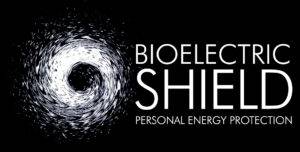Sensory Processing Disorder – Is Your Child Ultra-sensitive?
“This light is too bright! I hate how that shirt feels! I can’t eat that; it feels weird!” This is what life is like for a child with Sensory Processing Disorder.
Do you have a child in your home, or your kids’ home, who never seems to be comfortable with much of anything?
They want to eat the same food all the time, wear the same comfy clothes, and not do well with change. At some point, you asked, “what is wrong with this child”?
What is SPD – Sensory Processing Disorder?
When I was in graduate school, children who didn’t process sensory input accurately were said to have a Sensory Integration problem. This means that their brain is not processing sensory input (heat, touch, joint awareness) the way the rest of us do. So, the name was changed to Sensory Processing Disorder.
In everyday terms, this means that their brain is not interpreting incoming signals accurately. For example, a nice hot shower might feel like a burning, painful hurricane to a child with SPD, or a cotton shirt will feel so scratchy that it’s unbearable to wear.
Dr. Ayres referred to SPD as a neurological “traffic jam”. Signals don’t go where they are supposed to or don’t arrive at all. The result is a mishmash of sensory input that doesn’t always make a lot of sense to the person receiving it. What you see on the outside is a child (or adult) who is clumsy, often very sensitive to touch and texture, distracted, and overly reactive to their environment.
What Skills Are Affected by SPD?
A study published in 2001 outlined 5 functional impairments that are associated with SPD. They include:
- decreased social skills in play situations
- decreased adaptive responses
- lower self-esteem than their peers
- challenges with daily living skills
- diminished capabilities in gross-motor, fine-motor, and sensory-motor skills.
By “adaptive responses”, we mean the ability to respond appropriately to a situation. For example, if a child next to you suddenly yells, you simply move away if it bothers you. For the SPD child, the yelling may be perceived as pain, and they might cry or freeze in a panic.
Fear is a big issue.
When I was treating children with SPD, their fear of trying new activities led to many tearful moments despite encouragement from not only the therapist (me) but other children in the group. The therapy environment was simply a microcosm of what parents deal with every day, all day long, just attempting to get their child to eat or get dressed. Every activity can be a mountain to climb! Helping to normalize a child’s nervous system is the goal of SPD therapy.
The “Energy” Aspect of SPD – The Over-Reactive Child
Each child is unique with different responses, so you can’t make an overall generalization. The one thing they have in common is that it takes very little to have them become stressed out. They are often on the edge of being tipped into sensory overwhelm – even a trip inside a grocery store can be overwhelming.
Jack, who can’t handle noise
Author Emma Young, describes Jack, a young boy who found it unbearable to be anywhere loud. If you visit any elementary school, you’ll hear loud bells that announce a change in periods, fire drills with a deafening sound, and loud PA systems for announcements; in short, it is an environment that would be painful for a child like this. People with SPD can also be under-responsive in some senses and over-responsive in others. Read more
Brain research
In 2013, Dr. Miller collaborated with Dr. Elysa Marco, a pediatric neurologist and leading expert on SPD, studying MRIs to look at the brains of children with SPD versus a control group. They found a large difference in the back of the brain that processes visual, aural, and touch data between the SPD and the control group. In 2014, they compared children with autism and SPD because some of the behaviors overlap in both groups. It was significant that SPD children have less white matter, the part of the brain that connects parts of the brain together, whereas the autistic group showed impairments in brain circuits associated with emotions and reading a person’s face. Even though these studies can be ground-breaking, the medical community has not accepted Sensory Processing issues as a legitimate diagnostic category.
How do you treat SPD?
FIRST – Get therapy! Modify the Brain – the sooner, the better.
As a former pediatric Occupational Therapist (O.T), certified in Sensory Integration Therapy, I’d like to share with you that it’s a “must” to find an O.T. specializing in SPD. It might seem like a big financial investment, but the younger your child receives therapy, the better the long-term outcome! We know from research conducted over the past several years that a child doesn’t “grow out of” a sensory processing disorder. Therapy can help to modify the brain so it functions more normally.
Home Programs
Your therapist will treat the underlying neurological causes of your child’s sensory processing disorder. There are specific activities that will be used to help your child’s nervous system mature and normalize. Many therapists also recommend home therapy activities. You can search on the internet for a “therapist who treats SPD”, and hopefully, you will find an Occupational Therapist who has a clinic nearby. You may also receive some therapy through your local school system. Last, there are activity books available for parents that target SPD. One example is Everyday Games for Sensory Processing Disorder by Barbara Sher.
SECOND – Reduce the Energy Impact of the Environment on your
Turn down the dial
My second recommendation is this: assist your child in reducing their sensory overload. Even though the only visible research we can do on sensory processing disorders involves measuring some aspect of the measurable sensory-motor systems, your child will SHOW you that they are uncomfortable in certain situations. In blogs to come, I’ll go over ways to tame the environment, but for now, I’d like to tell you about an energy device that could be extremely helpful to anyone with SPD.
Support Your Human Energy Field
Many know that our body is not just a solid mass of organs and muscles. Around our bodies, there is something that is called an aura or energy field. If you could see this field, it would be composed of colors and moving energy. When energy comes into your aura, it can either be supportive or disruptive to your aura. The aura or energy field contains your 4 aspects: physical, mental, emotional, and spiritual. For example, when a person receives acupuncture, the stimulation to the acupuncture points moves through your energy field to balance your energy, which in turn affects your entire energy field.
Help for the Overwhelmed
Because of my 25 years of treating SPD children, including those with ADD/ADHD and the autism spectrum, I always wanted to see how much of their issues could be mitigated by reducing the sensory overload they ALL experience, in one form or another.
In 1990, Dr. Brown invented something called the BioElectric Shield. It is a pendant containing a physics-based crystal matrix set inside a precious metal setting that vibrates at the human frequency, strengthening and stabilizing the wearer’s energy. It deflects energies harmful to the wearer, including electromagnetic radiation. To date, thousands of people wear this Shield to protect them from different kinds of energy: WiFi, EMF, and other people’s energy. It dampens down the avalanche of unhealthy energy we are all exposed to with our electronics.
EMF and Sensory Processing Disorder
Research in the last 20 years has shown that constant exposure to EMF can cause a host of physical, mental, and emotional symptoms. If you have a child with SPD, how much time does s/he spend using an iPad or phone? In most cases, it is one of their preferred activities. Yet, brain research shows that the constant time on these devices can wire the brain to require this activity to release dopamine, our pleasure neurotransmitter. The book A Deadly Wandering explains the consequences of being so tied to our devices that our brain is rewired to exclude much of the outside world.
Your child may also be suffering from some sensitivity to EMF that produces physical symptoms (headaches, fatigue, lack of focus) that are related to hours of exposure. Wearing a Shield will reduce the exposure significantly.
Jason
Jason is a child whose Mom and Dad bought him an ADD/ADHD focusing Shield. He knows it helps him, and from day 1, his Mom has never had to remind him to put it on in the morning. This amazed her fairly since he’s never been one for consistent behavior. He’s usually “bouncing off the walls”. However, children know when something is making life easier, and Jason tells her it helps him stay calmer and more focused when wearing it.
Years later, with thousands of customers reporting a greater ability to focus, we’ve moved on to our next project! We now have two special matrixes designed to help the mild and severe Autism Spectrum Disorder children or adults.
Here are some of the special Shields we have for someone with a Sensory Processing Disorder
- The Focusing Shield: Some years later, my dream of helping children and adults who had issues with focusing was realized in a new matrix that included more crystals that specifically helped with focusing energy. We call it our focusing Shield. For most children with SPD, this Shield would be an incredible help to them.
- The Autism Spectrum Shields: your child might fall into this category. Thanks to our energy specialists, we now have 2 variations of this special Shield, one for mild ASD and one for the more severe.
- Sensory Processing Disorder: If you are not sure which Shield would be best for your child, we invite you to take a quiz on their behalf. It is called the EMF Sensitivity Quiz, but we have included several questions that relate to anyone with SPD. It’s likely you will end up with a recommendation for a focusing Shield. This will help you filter out and organize sensory input from the outside world.
- The Highly Sensitive Person: it is possible that part of your sensitivity may be related to a sensory processing issue. We encourage you to take the quizzes and find out!
Personalized Recommendation
We’re here to help you with your energy sensitivities. We’ve been helping folks since 1990! To get a personalized recommendation, please visit our Free Photo Analysis Page for instructions.
Special Help for Special Energy Needs – Take our Quizzes
We created 2 quizzes for the energy-sensitive child/adult. One addresses EMF Sensitivity. The other one addresses energy sensitivity, also known as HSP or highly sensitive person. For anyone who is energy-sensitive, we recommend that you take both quizzes. The EMF one will give you a recommendation for energy protection in the form of a Bioelectric Shield. The HSP quiz will help you understand your own or your child’s various types of sensitivities. Recommendations for how to cope are given at the end of this quiz.



0 Comments